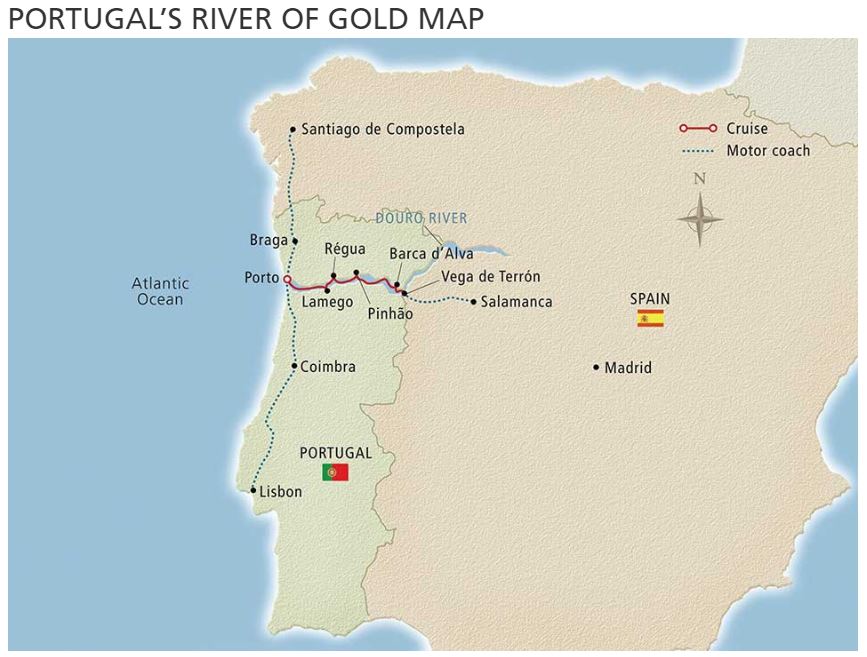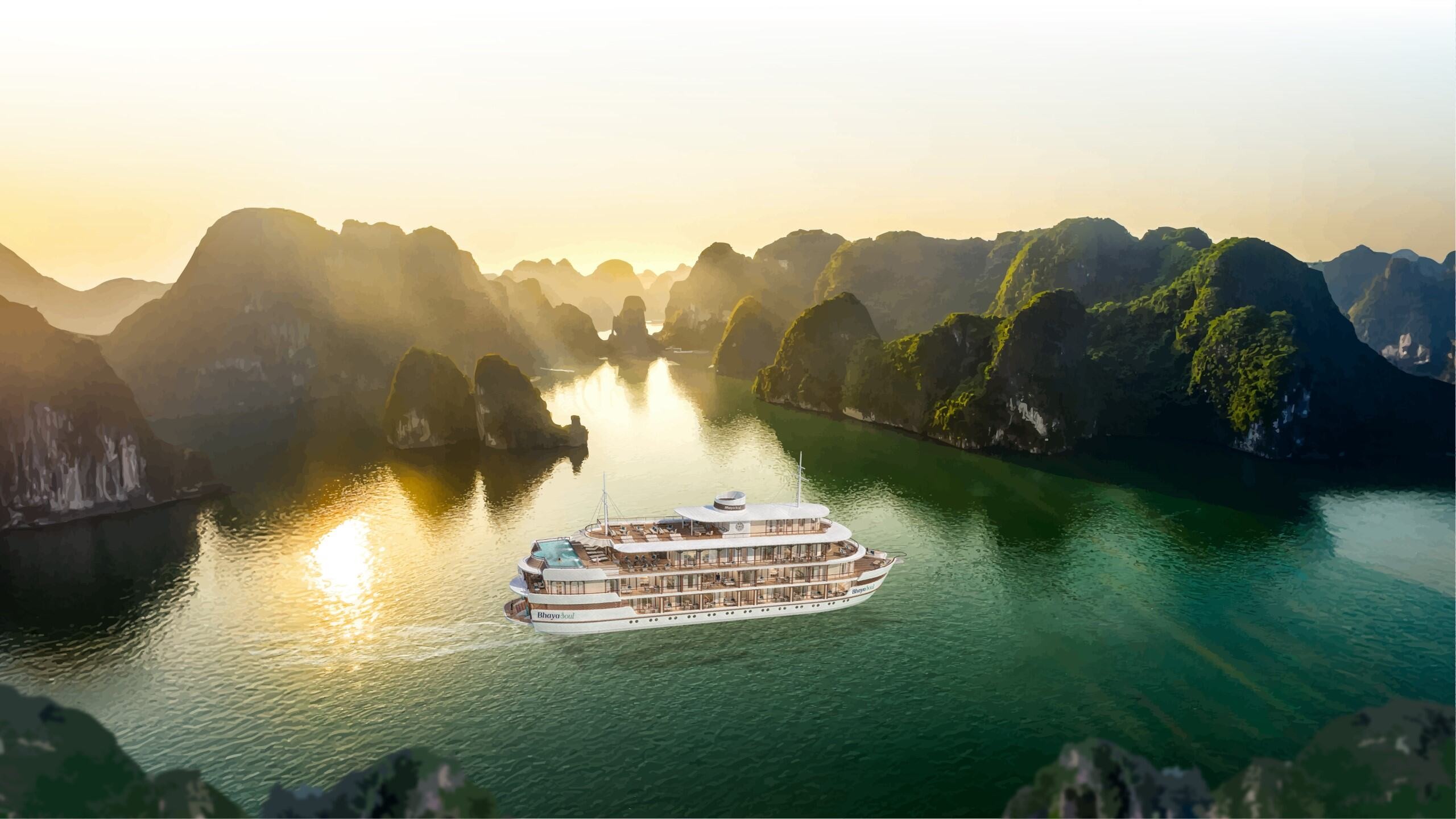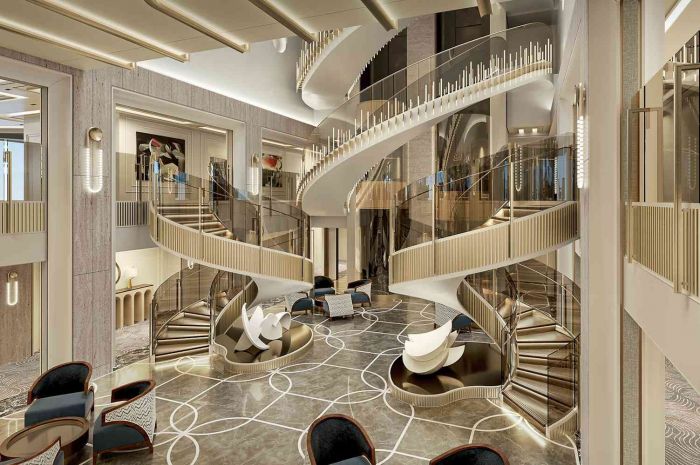Everything Old Is New Again: JustLuxe Explores Marialva, Portugal and Salamanca, Spain
The Rio Douro roughly translates from Portuguese as "(the) river of gold." There is a time, late in the afternoon, as the sun sets, rays of light turn the blue-gray river into the color of liquid gold. Or, it may have to do with the color of Tawny Port, whose grapes are grown in abundance on the terraced hillside vineyards above the river. Or, it could be a combination of both, nature and culture, of fluid color transformation and viticulture, no one knows. What is known, however, is Douro’s serpentine movement: it cuts across northern Portugal, 557 miles from the old city of Oporto, into the north central Spain. It flows with history, as great architecture and agriculture combine, separate, and combine again. Nothing is static.
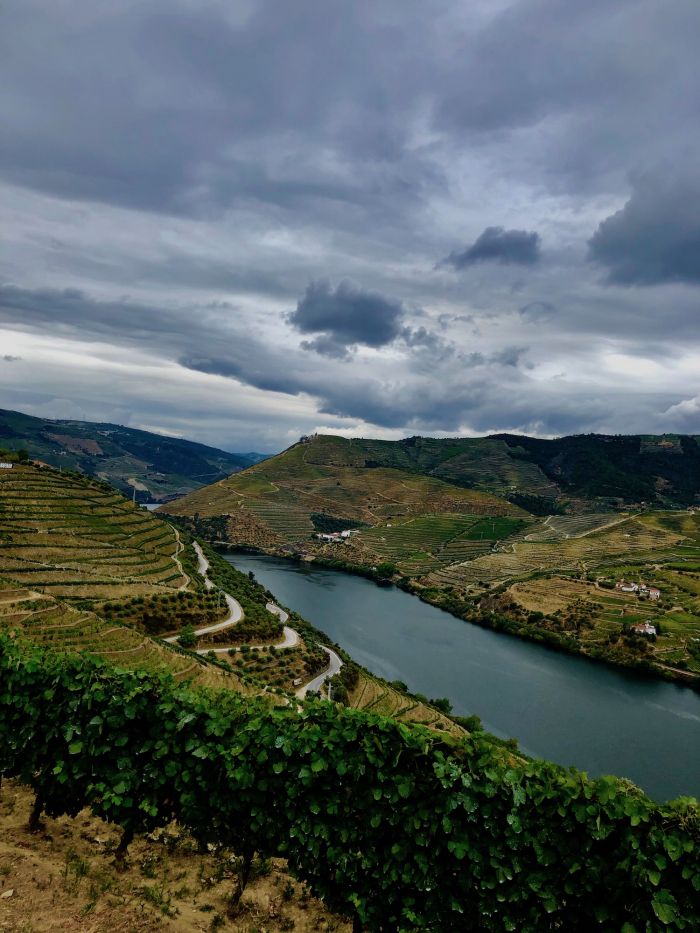
On our ten day Viking River Cruise, we explored many areas, but within the course of two days in particular, we explored two areas that were as different as the concepts of nature and culture, yet each carried traces of both. One was ancient, one modern, but the sweep of Iberian history were the essences of their colorful subtexts.
The last Portuguese river port town on the Douro is Barca d’Alva, just a few hundred yards from the Spanish border. We left our ship and drove to our destination-- Marialva, which in hindsight, was a profound surprise. First, we climbed a long hill to the ruins of Marialva fortress and castle. At the base of the ruins stands a church, a village (population 30 or 40 according to our guide) and a cemetery.
Marialva Fortress stands on a hill, a little over 2000 feet, overlooking the westernmost edge of one of the Iberian plateaus of the Iberian Peninsula. Its history is sketchy, but it is known that a Roman city, Civitas Aravorum was here in 179 AD. A continuous occupation allowed a charter for this area to be drafted in 1179 AD. Not much else is known, but seeing the ruins, I could see how substantial this ancient fortress was. Even though much is lost, much remains, and at the pinnacle, you could still see land, village, vineyards, plateaus, and distant waters.You could also see ancient enemies approaching.
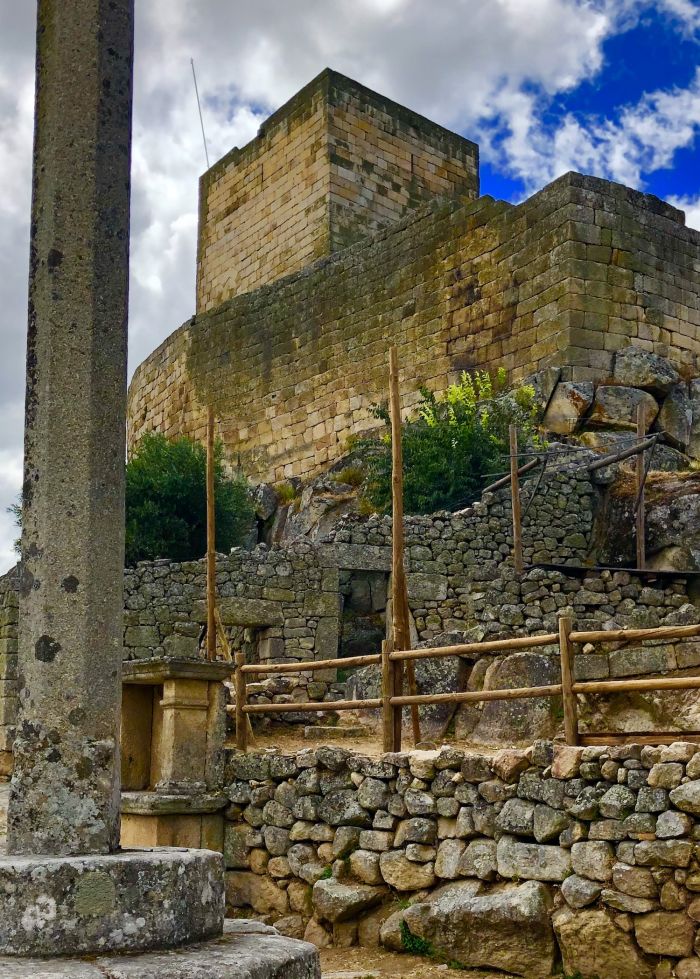
However, an unexpected surprise awaited at the end of this fortress adventure. In the shadows of this ancient second century fortress and Roman city, was of all things, a luxury retreat. I have been to many luxury resorts and retreats, but never one in the shadows of a second century Roman ruin. The retreat/resort is called Casas do Coro.
It is a collection of stone residences and cabins, with a pool, garden, spa, a small vineyard, and restaurant. We had lunch there, and were given a tour of this eco-sensitive property, and the organic gardens as well, all within ubiquitous sight of these daunting ruins. The experience was also daunting: the past looking down at the present, the old looking at the new.. I could not help but think of some of the lines from the Peter Allen song Everything Old Is New Again.

Don’t throw the past away/You might need it some rainy day/Dreams can come true again/When everything old is new again
And with those lyrics running in my mind, we drove away from the Douro, on to Salamanca, Spain – whose roots were even older than Marialva's.
Salamanca was founded by a Celtic tribe – their identity lost to history -- that was conquered by Hannibal and later controlled by the Romans. The Roman walls and defensive turrets still stand today, as well as the Puente Romano de Salamanca, a Romanesque bridge, with 15 granite arches, that span the Tormes River. Originally constructed in the year 89, it was reconstructed after being damaged by flooding in the 17th century.
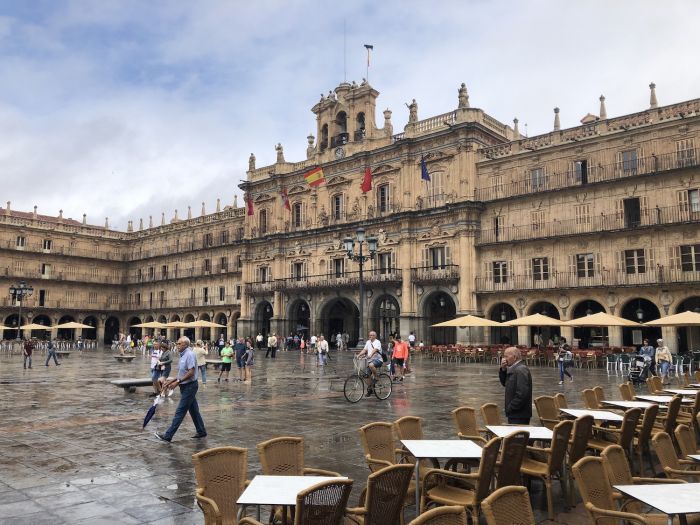
As we sensed and saw at every trun, this is an old city with one of the oldest universities in Europe. Founded in 1134, it was the first university to receive the title ‘La Universidad’ in 1254. Since the 13th century, Salamanca University has hosted many historical and literary giants -- Miguel de Cervantes, Christopher Columbus, Ignatius Loyola and Hernán Cortés. The library was closed the days we visited, but thanks to Wikipedia, the image below is one of the 160,000 leather bound volumes that fill this space.
What was open was all else: The Plaza Mayor, completed in 1755, is a great example of the Spanish Baroque style. Initially used as a bull fighting arena, it’s now home to boutique shops and Tapas cafes. But then, the Plaza Major’s street leads down to the Old and the New Cathedrals.
The Old Cathedral is Romanesque, dating from the 12th century and is famous for its ornate Gallo Tower. The adjoining New Cathedral was built in stages from 1509. Not shockingly, that New Cathedral took over two hundred years to build and was completed in 1734. New is a relative term!
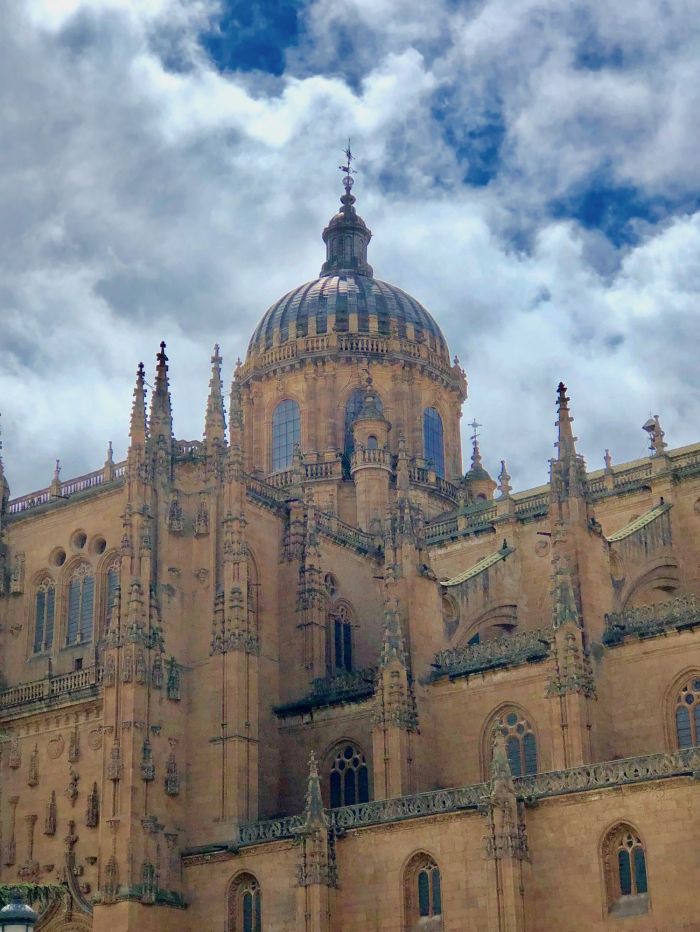
Near these dual Cathedrals, up the street, is the Casa de las Conchas that now houses an event space and a public library. It was built from 1493 to 1517 by Rodrigo Arias de Maldonado, a knight of the Order of Santiago de Compostela. Its most unique feature is the façade, decorated with more than 300 scallop shells, symbols of the order of Santiago, as well as of the walking pilgrims performing the spiritual walk, called the Way of St. James.
All that said, leaving Conchas and Cathedrals behind, we were jarred into contemporary life as we walked to the Salamanca city market, open weekends, selling everything from frozen cod, shrimp, fish with glassy eyes, ice cream, Spanish chocolate, Portuguese chocolate churros, vegetables, fruit, and multiple varieties of sausage and cheese. To many in our group it was a shock, moving from a revered, holy quiet of sacred places into contemporary life so quickly, with happy noise of buying and eating alost everywhere. But it was a needful step as we moved back toward the Douro and our vessel, the Viking Helgrim, our first in returning to Porto, and going home.
In those two days, we saw fluid transformations from ancient to modern, and of luxury within the confines of simplicity. Seeing Mariela and Salamanca so closely linked in time. allowed us to experience the often anomalous combinations of nature with culture, aligned, not contentious. Can everything old be new again? Depends on the meanings of old and new. The combined permutations seem more meaningful and memorable.

Ancient village of Marialva
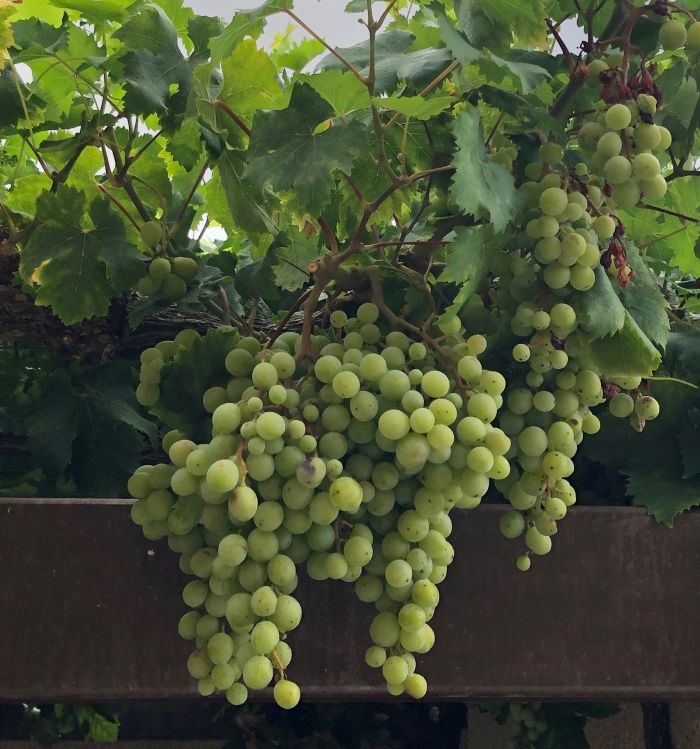
Casas do Coro Grapes
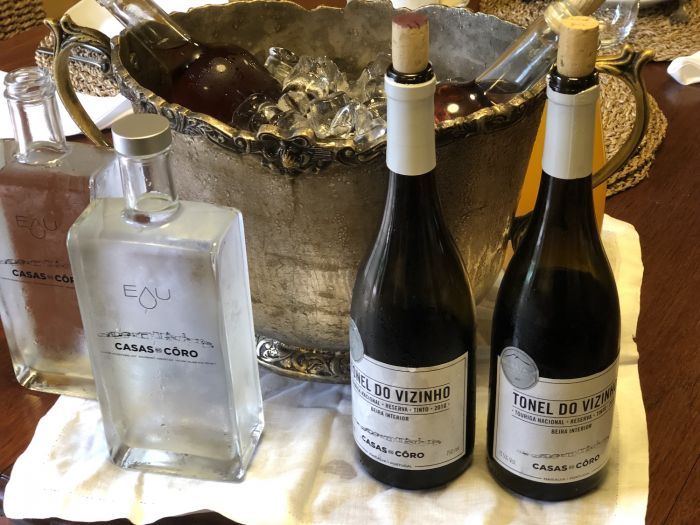
Casas Do Coro wine and water, served at lunch.

Old Library, University Of Salamanca, 160,000 volumes.
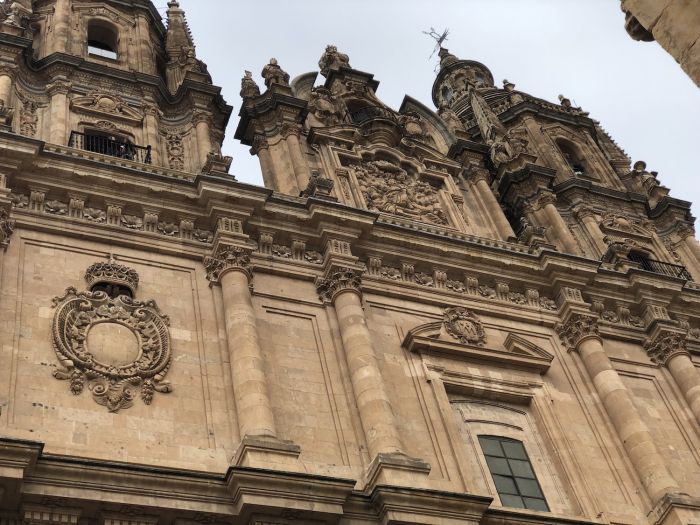
Part of Exterior, New Cathedral Salamanca.

Casas De Los Conchas, Salamanca.

Candy Vendor, Salamanca Open Market
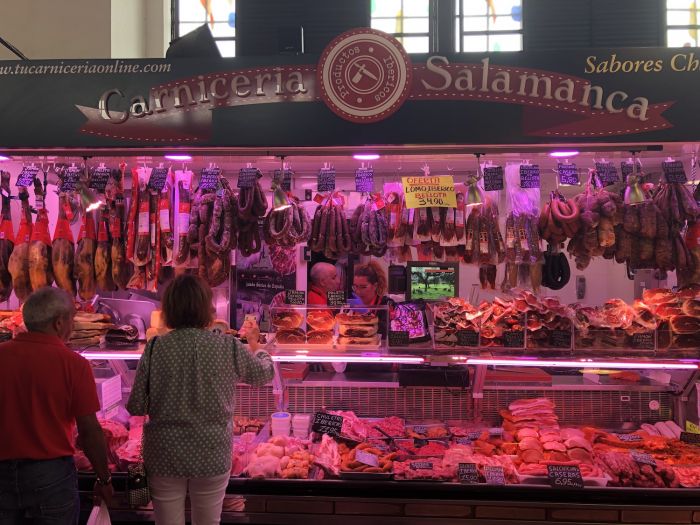
Meat and Salami vendor, Salamanca Open Market
